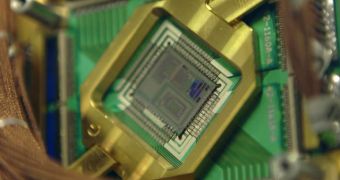It's no secret that Google has a quantum computer. In fact, it's one of the few companies in the world that can brag about that. Granted, the question of whether the computer it has is actually a "quantum computer" still hasn't been answered conclusively.
Back in May, Google teamed up with the NASA Ames Research Center to buy and operate the second ever commercially sold quantum computer, from D-Wave. The acquisition was a highly experimental one as, since then, the search giant has been trying to figure out what the device is good for.
The big problem with quantum computers, which are mostly in the theoretical realm for now, is that they require a whole new mode of thinking. They can provide great answers much faster than classical computers, but only if you ask the right questions.
One of the things Google is most interested in and one of the most obvious applications of a quantum computer are optimization problems.
The standard example is trying to plan a trip through several cities and deciding which route is the fastest or the cheapest, taking into account several other variables. This is a hard problem to solve with classical computers.
But because quantum computers can process a huge amount of solutions in parallel, rather than having to try them out one by one, optimization problems don't pose much of a challenge. Coming up with an algorithm or a way of providing quantum computers with the data they need and which they can process instantly is a challenge though.
Google hasn't said much in the months since it installed its computer, but it is breaking the silence now with a presentation describing both quantum computing and what the company has achieved so far. According to The Verge, Google has been making some progress, testing out different algorithms.
One of the first practical applications, it seems, has been in creating a better blink detection algorithm for Google Glass. The device can be controlled by winking, but it's hard for it to know whether you're just blinking, which humans do several times a minute, or actually trying to "tell" it something.

 14 DAY TRIAL //
14 DAY TRIAL // 